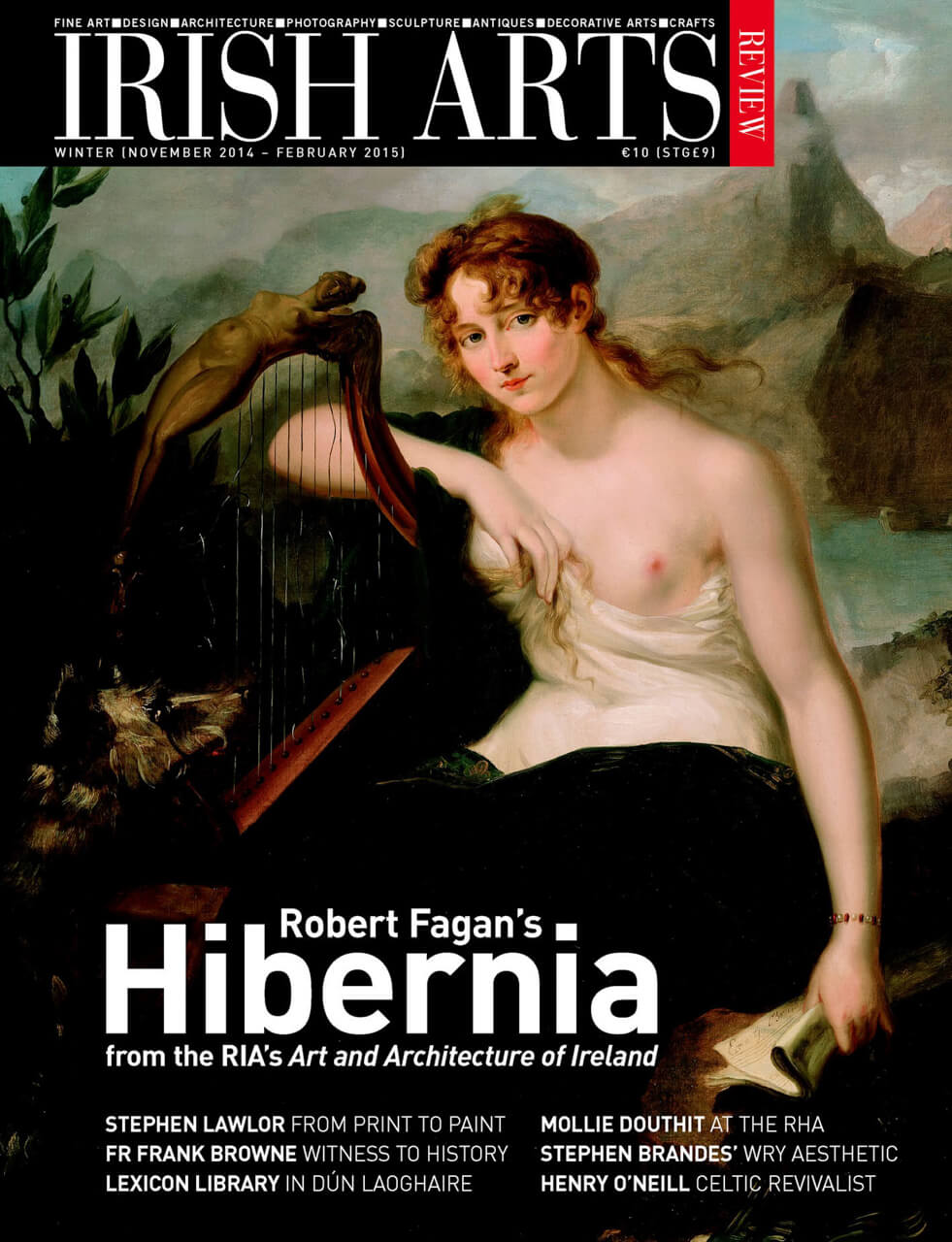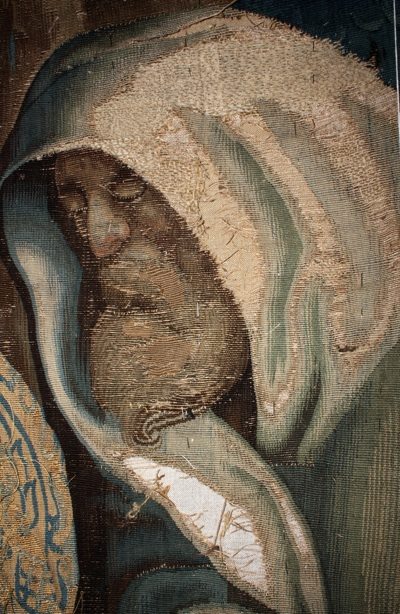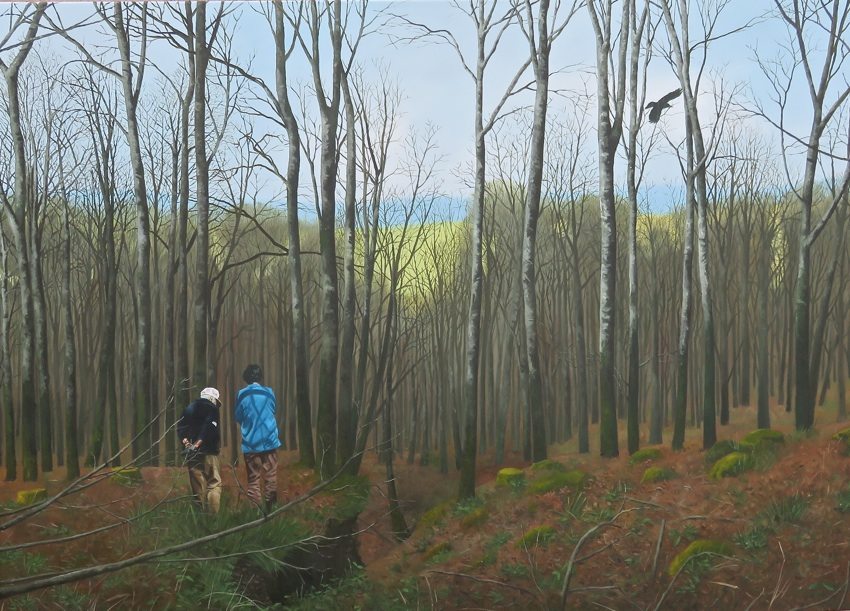As St Mel’s Cathedral in County Longford prepares to reopen following the fire of 2009, Andrew Halpin reports on the rescued Shrine of St Caillin and Nicola Gordon Bowe recounts the history of the Clarke Studio windows
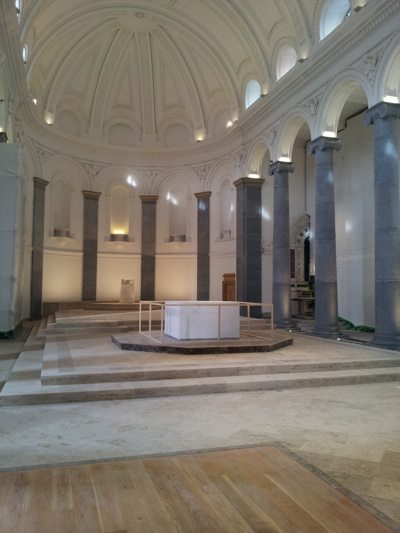
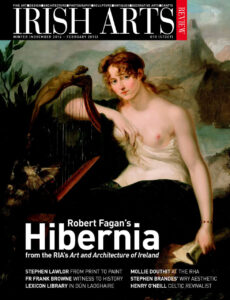
As the restoration of St. Mel’s Cathedral by Fitzgerald Kavanagh + Partners has been announced as the Winner of the Public Choice Award at the 2015 RIAI Irish Architecture Awards, we re-publish here our article on St. Mel’s by Andrew Halpin and Nicola Gordon Bowe
During the night of Christmas Eve, 2009 a disastrous fire destroyed the interior and furnishings of St Mel’s Cathedral, Longford. The architectural, artistic and spiritual loss was huge, particularly to the people of Longford. Watching the dramatic footage of the fire, however, my first thoughts – like those of my colleagues in the National Museum of Ireland – were not for the architecture or artistic treasures of the Cathedral. Rather, I thought of the little Diocesan Museum housed within the building which, I knew, contained a number of artefacts of national importance. Sure enough, in the aftermath of the fire the National Museum and the Cathedral authorities agreed that a National Museum team would mount an operation to try to recover any artefacts from the Diocesan Museum which had survived the fire. I was asked to lead the team.
Assembled in the 1930s and 1940s by Fr Michael Kearney, President of St Mel’s College and moved to the Cathedral in 1974, the museum collection included almost 500 items, mainly of ecclesiastical interest but including archaeological, historical and ethnographic objects. Several objects were of national importance, notably the 10th-century crozier of St Mel, found at Ardagh, Co Longford in the 19th century. Equally significant were the Shrine of St Caillinn of Fenagh, Co Leitrim (Fig 1), an elaborately-decorated book shrine dated to 1536 and associated with Brian O’Rourke, Lord of Breifne and the 12th-century Clog na Rígh – ‘bell of the kings’ – also associated with St Caillinn and Fenagh (Fig 4).
The museum had occupied the north-west corner of the Cathedral building at first-floor level, directly over the sacristy, with another room above this again, at second-floor level. The fire completely gutted all three levels and the debris had collapsed into a sub-basement beneath the sacristy. We carefully removed this mass of ash and debris over several weeks in January 2010, approaching the task as an archaeological excavation – albeit one carried out under very unusual circumstances and difficult conditions. The excavated debris was subsequently brought to the National Museum, Collins Barracks, for further meticulous sieving to recover any fragments of artefacts that might have been missed on-site.
Unlike in most archaeological excavations, we had the advantage of knowing what we were looking for, thanks to a 2006 survey of the collection that recorded and photographed each object. This revealed that almost 75% of the artefacts were of metal, stone or other durable materials that might have survived the fire, at least in part. In the event, almost 200 artefacts were recovered – not as many as we had hoped, but probably more than we had any right to expect. Technical investigations into the cause of the fire, still ongoing while we were on site, revealed that the sacristy – and the museum above – had been at the very epicentre of the inferno. Under these circumstances it’s probably remarkable that anything survived at all.
‘Survived’ is a relative term, however. Some objects, such as prehistoric bronze axeheads and spearheads, were still relatively intact and recognizable, although damaged. Others, however, were quite unrecognizable and could only be identified after a lot of work. An ornate Subscription Book of 1838, recording donations to the Cathedral building fund, ‘survived’ only in the form of its brass clasps. Tragically, the only part of the 12th-century Clog na Rígh to survive was the relatively modern iron beam on which the bell was mounted (Fig 4). The bell itself, made of relatively thin sheet bronze, did not survive – at least in any recognizable form. Early in the excavation we were delighted to recover the Shrine of St Caillinn, encased in a mass of ashy concretions but still substantially intact. The relatively good condition of this shrine raised hopes of finding the most important artefact of all, the crozier of St Mel (which had been in the same display case). Sadly, these hopes were to be dashed. By the end of the excavation no trace of the crozier had been found. We had already begun to search again, on site, through the debris removed from the building when my colleague Carol Smith emerged from our site office one day with a shapeless piece of molten metal – one of many such pieces recovered from the building that she was cleaning and examining. As she turned this piece over, with a sinking feeling we recognized traces of cast interlace decoration that identified it as part of the crozier. Apart from another small fragment identified later, this is all that survives of the crozier of St Mel, once a beautiful and important relic of the 10th-century Irish Church.
Other important objects survived, albeit in damaged form, including an early medieval iron hand-bell from Wheery, Co Offaly and a 13th-century crozier-head from Limoges in France (Fig 5). The surviving artefacts were brought to the National Museum for assessment and, although many were beyond help, it was felt that most could benefit from conservation treatment, if only to stabilize what remained and prevent further deterioration. An archaeological conservator, Kasia Bernaciak, worked for almost two years on these artefacts, especially the Shrine of St Caillinn. Restoring the shrine – or any other object – to its former appearance was never going to be possible but Bernaciak succeeded in giving us back a recognizable late medieval book shrine (Fig 2). Indeed, in some respects its scarred and battered condition has added an extra layer of meaning to this artefact, as something precious that survived the flames of that terrible night.
Andrew Halpin is Assistant Keeper in the Irish Antiquities Division, at the NMI.
Rumour had it, when fire gutted the interior structure of St Mel’s Cathedral in the early hours of a bitterly cold, snowy Christmas Day in 2009, that among the greatest losses was the stained glass by Harry Clarke. In fact, the two fine windows in question were not by Clarke himself, who had been killed tragically young by tuberculosis before his 42nd birthday in January 1931, but by the Dublin studios established shortly before his death in his name, in 1930. The designers, craftsmen (and women) and the glaziers who worked at Harry Clarke Stained Glass in a purposely-converted Georgian house in North Frederick Street had all been recruited by Clarke. Many of them had been trained and worked closely supervised by him before his declining health increasingly forced him abroad for treatment in a Swiss sanatorium. Notable among the artist-designers were William Dowling and Richard King (1907-1974), both of whom entered the studio, then still named Joshua Clarke & Sons, as very young men in 1928. It was King, who became principal designer at the Clarke Studios after Clarke’s death (and subsequently manager from 1935-40 when he branched out independently), who was responsible for the prestigious commission for Longford. The order, confirmed on 8 September 1932 at the considerable cost of £500 for both windows, came from Mr Herbert F Mooney of 33 Fitzwilliam Place in Dublin.
Her heartbroken husband gave instructions for a pair of windows ‘to perpetuate the loving memory’ of his beloved wife
Somehow the brass dedication plaque originally set into the wall beneath one of the windows had become detached, and was only discovered amidst the charred rubble of the Cathedral after the fire. Research has revealed the poignant story behind the windows erected by Mr Mooney.1 On 7 September 1927, he married Ruby Lyons of Cloncoose, Longford, whom he took as his bride back to India, where he worked with the India Forestry Service. Less than four years later, when she was sailing home for a holiday visit to Clooncoose with their two children and her sister, she was taken ill and died in Marseilles, only three months after Harry Clarke and even younger than him. Her heartbroken husband gave instructions for a pair of windows ‘to perpetuate the loving memory’ of his beloved wife, stipulating that their subjects should be, her patron saint,2 and, because his ‘belief and hope in the Resurrection’ sustained him ‘during the dark days following her death’.3 Set into the side walls of the transept gables of the Cathedral Chancel, these large, majestic windows each measure 15 ft x 5 ft, which (along with the exceptional amount of workmanship, rich glass and skill involved) accounts for their high price. No expense or trouble has been spared in King’s strong, complementary compositions, which clearly indicate Clarke’s influence as well as his own emerging talent.
Fortuitously, in 1997 Monsignor Bernard Noonan, Administrator of St Mel’s, had entrusted the Abbey Stained Glass Studios of Dublin with the conservation and restoration of the stained glass in the 19th-century neo-Classical Cathedral. And by further good fortune, the Director of Abbey Stained Glass, Ken Ryan had kept all the detailed working rubbings, tracings and photographs his firm had made of the windows, not just by the Clarke Studios, but also of two similarly important nave windows of the same date by Earley & Co, two in the Sacristy by Mayer’s of Munich and further glazed clerestory windows and fanlights. Thus, although the windows seemed irreparably damaged not only by the intense heat of the raging fire but also by the shock effect of the firemen’s cold water hoses, these records were able to act as faithful guides to the Abbey Studios’ craftsmen as they painstakingly reconstructed them over the ensuing year.
Nicola Gordon Bowe is the author of Harry Clarke: The Life and Work (Dublin 2012).
From the IAR Archive
First published in the Irish Arts Review Vol 31, No 4, 2014
